(see the first part of the travelogue in the previous post)
After departing from Inari, we (Agrafena Sopochin, Marija Launonen and me) headed up North to meet the writer Kirste Paltto at her place north of Karigasniemi at the River Tano. 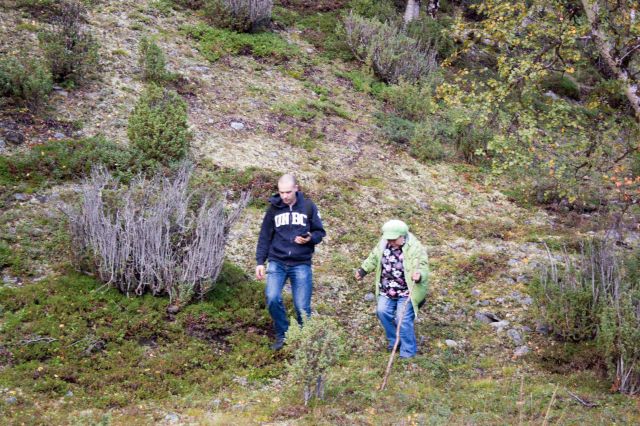
 But first we took a stop at the Suttesaja spring and had a little hike. At recommendation of my colleague Philipp Burgess, I read an article about the struggle of local Sámi to protect the spring from being turned into a large scale water bottling factory Kirste Paltto took part in.
But first we took a stop at the Suttesaja spring and had a little hike. At recommendation of my colleague Philipp Burgess, I read an article about the struggle of local Sámi to protect the spring from being turned into a large scale water bottling factory Kirste Paltto took part in.
The next day we were invited to the Sámi parliament in Karasjok and Anders Henriksen, the responsible person for the international relations gave us a wonderful tour through the building and discussed with us the particularities of the Sámi political representation in Norway.
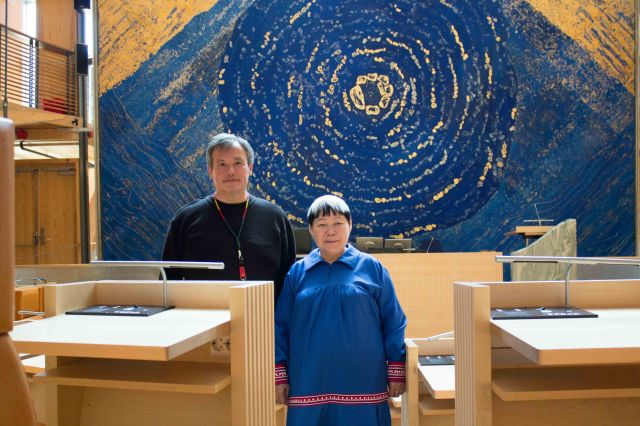
With Anders Henriksen
The financial resources that make such impressive system work are partly deriving from revenues made by the extractive industries, particularly the Norwegian oil-business. But in comparison the home region of Agrafena Sopochina, the Khanty-Mansi district produces almost 3 times more oil than Norway, but part of oil revenues that drop down to the indigenous people seem incomparable smaller. But is not only about money, but also about the weight of attention that is given to indigenous issues. A vivid example was the shelf of school-books in different Sámi languages, that was presented to us in the Sámi library in the same building.
The tour through the Sámi Radio and TV-Station was just overwhelming for all of us.
Nils Johan Guap from the NRK Sápmi told us everything and brought us even to the studio, where children’s programs are originally produced in Sámi language for Sámi children for a speaker community smaller than 30 000 people. It seemed like a fairy tale from the future for the Khanty guests against the background of reality in Russia nowadays.

Then we went further North.
The northernmost point of our journey we reached in Alta, where we had a look at the impressive rock-paintings. The drawings picked in stone show, that since the very beginning, when people came to the region after the ice age the reindeer was the most important animal for them.
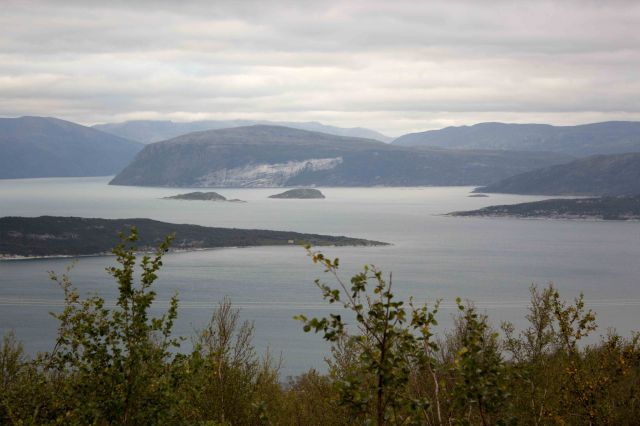
And it does so for the indigenous people in the Arctic up to the present day. So it was only logical, that after a beautiful journey through the landscape of the fjords, we visited Johan Mathis Turi, the former president of the Worlds reindeer herders association and a great specialist in reindeer herding culture all over the Arctic.
He generously hosted us in his home on the Lyngs-fjord in Oteren. We had a beautiful evening with him discussing all kinds of issues of reindeer herding: new technologies like migrating the reindeer in big trucks as well as traditional knowledge like feeding differently prepared fish to the reindeer among the Khanty.
From the Norwegian Fjord we turned back to the inland and to Finland were we decided to call Leena and Oula Valkeapää if they would be willing to meet spontaneously for an evening. We were happy that they agreed and we met them at their home at the beautiful Kivijärvi. In retrospective Agrafena considered this place the most beautiful, we visited on the whole journey. Leena and Oula shared with us the fish, they just planned to have for dinner.
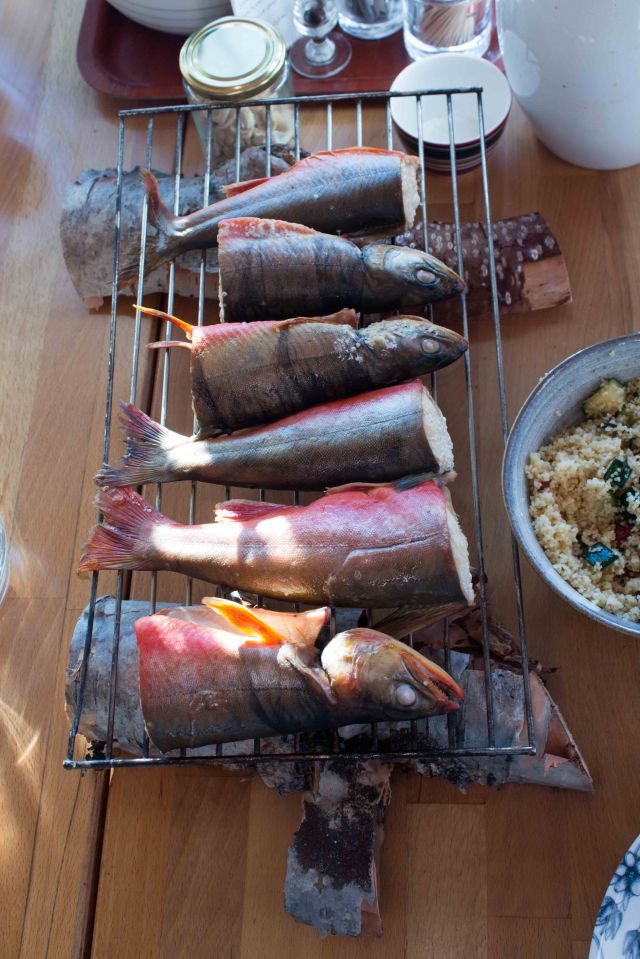 It was almost like an artistic composition – the place, the light of the sunset, the food and the conversations on indigenous views, on Johan Turi and Nils-Aslak Valkeapää, Oulas uncle.
It was almost like an artistic composition – the place, the light of the sunset, the food and the conversations on indigenous views, on Johan Turi and Nils-Aslak Valkeapää, Oulas uncle.
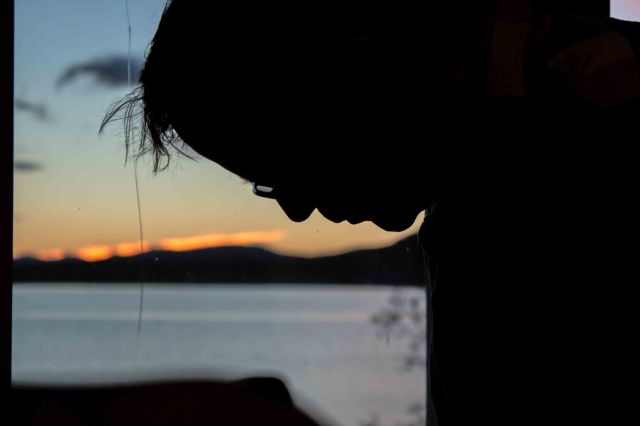
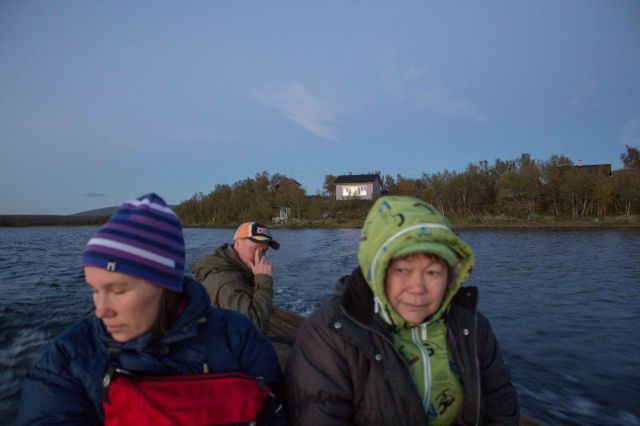
Farewell

The travel was perfectly rounded off by an invitation to a dinner in the Arktikum in Rovaniemi at the exhibition “NAM NAM – Arctic food, snacks and grub”
But the journey was not over after this highlight. Now we travelled south, met Prof. Veli-Pekka Tynkkynen in Tampere and Mart Meri in Tallinn, before reaching finally Saint Petersburg by car. Both meetings I would almost call historical. Veli-Pekka discovered that decades ago as a young student he hosted Agrafena not knowing that his interest in Russia and the areas, where the Khanty are living, would make him later one of the leading experts in Russia’s energy policy. Now he is one of the supervisors of Marija’s master thesis at the University of Helsinki.

With Mart Meri Agrafena shares the memory of one of the most important moments in the cultural live of Surgut Khanty in the last century. They were both collaborating with Lennart Meri on his documentation and film project “Sons of Torum” recording a unique number of Khanty bear feast performances. I’m full of hope, that this meeting after almost 30 years will be the beginning of a new enterprise – the return of Khanty heritage for the revival of the Surgut Khanty bear ritual.
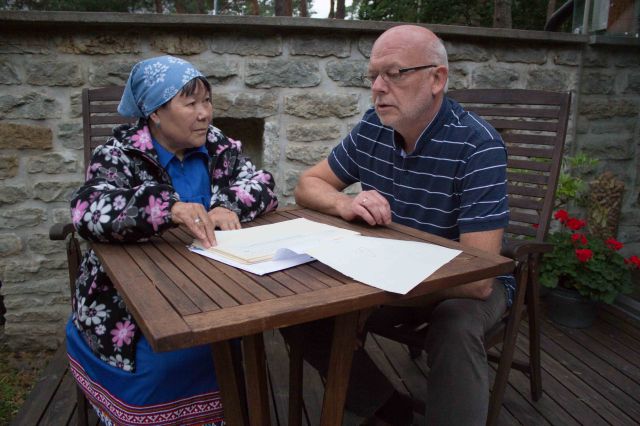











Pingback: Khanty activists Agrafena Sopochina travelled to Lapland | Arctic anthropology